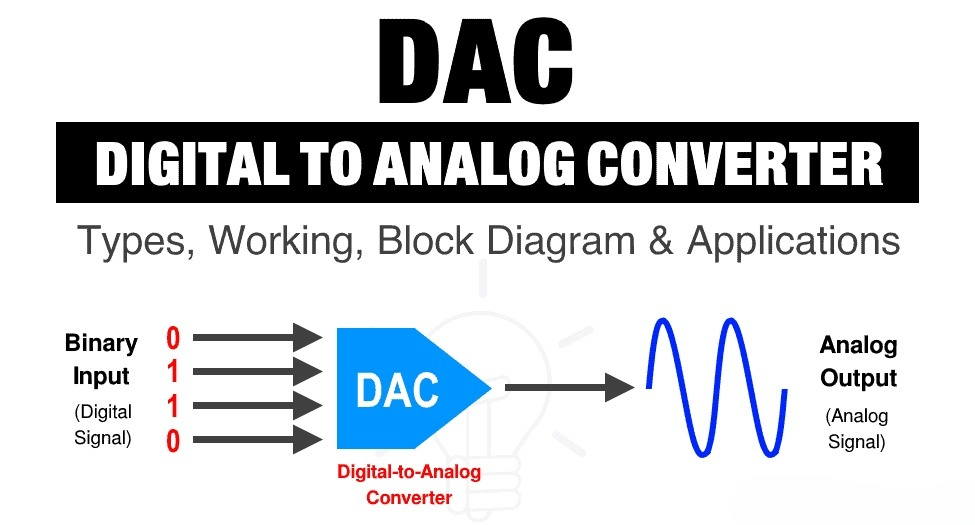As a Digital Creator immersed in today’s digital era, I frequently encounter terms like “digital” and “analog,” which hold significant relevance not just in technology but also in our daily existence. Among the devices that seamlessly connect these two domains is the Digital to Analog Converter (DAC). In this piece, we’ll delve into the importance and workings of a DAC, along with its diverse applications across different industries.
I. Understanding Digital and Analog Signals
To grasp the importance of a digital to analog converter, it is essential to understand the fundamental differences between digital and analog signals. Digital signals are discrete and represent information in binary form, consisting of ones and zeros. On the other hand, analog signals are continuous and vary smoothly over time, representing information in a wave-like form.
II. What is a Digital to Analog Converter (DAC)?
A digital to analog converter, as the name suggests, is a device that converts digital signals into analog signals. It takes input in the form of binary digits (bits) and produces an output that represents a continuous range of values. The DAC plays a vital role in enabling digital devices to interface with analog systems, such as speakers, displays, and sensors.
III. How Does a Digital to Analog Converter Work?
The functioning of a digital to analog converter involves several stages. At its core, a DAC consists of a network of resistors, capacitors, and transistors that work together to convert digital signals into analog voltages or currents. Here is a simplified overview of the process:
1. Sampling:
The digital signal is sampled at regular intervals to capture discrete values.
2. Quantization:
Each sample is then assigned a specific binary value based on its magnitude.
3. Digital-to-Analog Conversion:
The binary values are converted into corresponding analog voltages or currents.
4. Reconstruction:
The analog outputs are reconstructed to form a continuous analog signal.
IV. Applications of Digital to Analog Converters
Digital to Analog Converters find applications in various fields where the conversion of digital signals to analog signals is necessary. Some common applications include:
1. Audio and Music Production:
DACs are used in audio equipment like sound cards, music players, and studio equipment to convert digital audio signals into analog signals that can be heard through speakers or headphones.
2. Video and Graphics Displays:
Digital to Analog Converters are employed in video graphics cards to convert digital video signals into analog signals that can be displayed on monitors or projectors.
3. Telecommunications:
DACs play a crucial role in communication systems by converting digital signals into analog signals for transmission over analog channels such as telephone lines.
4. Industrial Automation:
In industrial automation, DACs are used to convert digital control signals into analog signals to control actuators, valves, and other analog devices.
Frequently Asked Questions about Digital to Analog Converters (DACs)
1. What is a Digital to Analog Converter (DAC)?
A Digital to Analog Converter, often abbreviated as DAC, is a device that converts digital signals into analog signals. It takes digital data and translates it into an analog waveform, making it usable by analog devices such as speakers, monitors, and more.
2. How does a DAC work?
DACs work by taking a digital input, typically in the form of binary code, and converting it into an analog output voltage or current. This conversion process involves several steps, including sampling, quantization, and reconstruction, ultimately resulting in a continuous analog signal.
3. What factors should be considered when choosing a DAC?
When selecting a DAC, factors such as resolution, sampling rate, output voltage range, distortion levels, and interface compatibility should be taken into account. The specific requirements of your application will determine which features are most important for your needs.
4. Are DACs only used in consumer electronics?
While DACs are commonly associated with consumer electronics like audio players and video displays, they are also used in industrial automation, automotive systems, telecommunications infrastructure, and more. Any application that requires the conversion of digital signals to analog signals may benefit from the use of a DAC.
5. What are the different types of DACs available?
There are several types of DACs, including:
Binary-weighted DACs
R-2R ladder DACs
Delta-sigma DACs
PWM (Pulse Width Modulation) DACs Each type has its own advantages and is suited for specific applications.
Conclusion
In conclusion, the Digital to Analog Converter (DAC) is a vital component in bridging the gap between the digital and analog worlds. Its ability to convert digital signals into analog signals enables seamless communication and interaction between digital devices and analog systems. Understanding the functionality and applications of DACs is essential for anyone working in fields where digital and analog signals coexist.
By delving into the world of digital to analog converters, we can appreciate how this technology empowers us to harness the benefits of both digital and analog domains, ultimately enhancing our everyday experiences.
Also Read:
The Best Digital Thermometer: An In-Depth Review
The Benefits and Functionality of Digital to Analog Audio Converters








Be First to Comment